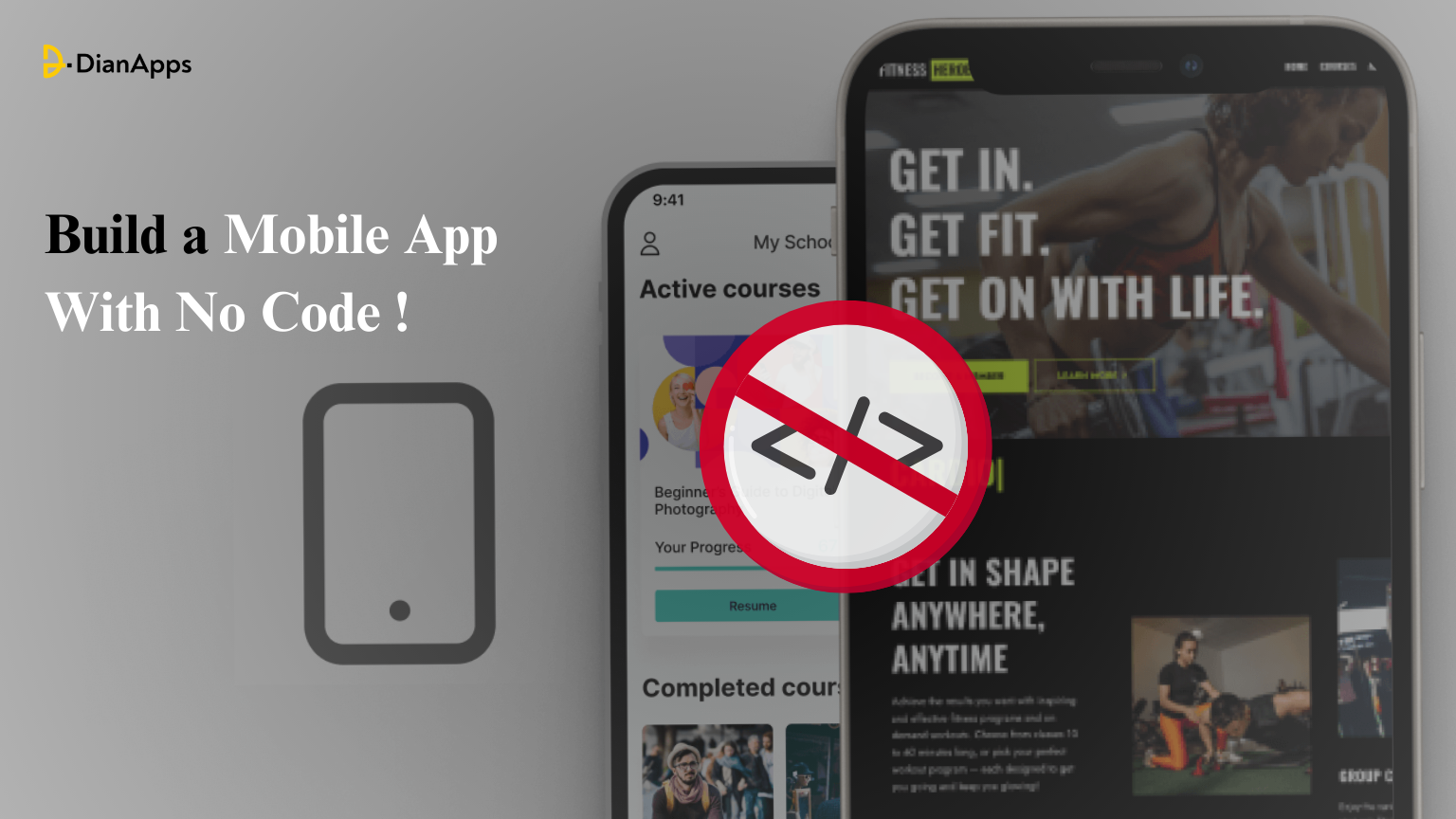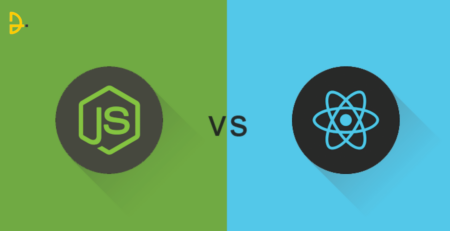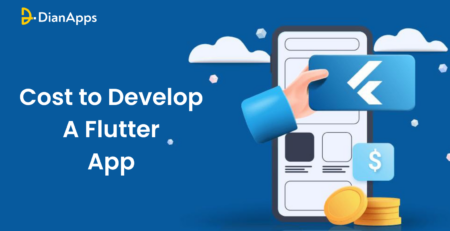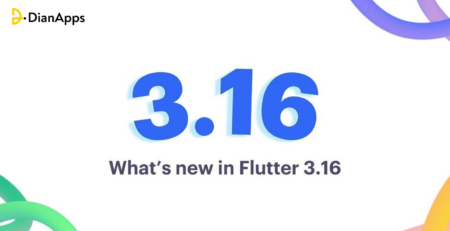A Beginner’s Guide: How to Build a Mobile App (Even With No Code)
Ever had an app idea that you believed could change everything, but stopped yourself because you don’t know how to code?
You’re not alone.
More than 86% of app ideas never make it to reality because the creators don’t have the technical skills or the resources to hire developers.
But what if we told you? You don’t need to code at all?
Yes, you read that right.
Thanks to no-code development tools, you can build a fully functional mobile app all by yourself, without touching a single line of code.
It’s not just a trend. It’s a movement.
And it’s growing fast.
According to Gartner, by 2025, 70% of new applications will be built using no-code or low-code technologies.
That means now is the best time to jump in.
No-code platforms are turning everyday creators, founders, marketers, and even high-school students into app builders.
So if you’re wondering:
- Can I really build an app with no tech background?
- Is no-code development secure and scalable?
- Which tool should I start with?
You’re in the right place.
This guide is your complete beginner’s roadmap to building your first mobile app, with zero coding and no technical overwhelm.
Whether you’re a small business owner, an aspiring entrepreneur, or just curious, this is your chance to bring your idea to life.
And while a mobile app development company might still have its place for large-scale projects, you don’t need one to get started.
So let’s get started. Your no-code journey starts here.
Understanding No-Code Development
No-code development is a powerful method that lets anyone build apps using visual tools rather than programming languages. Think of it as creating a puzzle by dragging pieces instead of writing code. Everything is modular and user-friendly.
You pick elements like buttons, menus, forms, and logic flows and connect them visually. You can literally see how your app works as you assemble it. This creativity is accessible at your fingertips.
Advantages of no-code development:
- Zero coding skills needed
- Fast prototyping and feedback
- Simplified updates and maintenance
- Lower cost than traditional development
This makes no-code platforms ideal for startups, entrepreneurs, small businesses, and hobbyists.
How Does No-Code Development Work?
Building an app with no code relies on a few key building blocks:
Visual Interface Builder
You create the look and layout of your app by dragging and dropping headers, images, text fields, buttons, and shapes onto a phone screen canvas.
Prebuilt Components and Templates
Platforms offer ready-made pieces like login forms, navigation bars, contact forms, chat modules, or payment systems. Just pick and drop them.
Logic or Workflow Editors
Need an action to happen when a button is pressed? No code tools let you define workflows visually: if a user taps a button, then saves input, stores data, sends email, or navigates to another page.
Database Integration
Your app needs data storage. No code tools connect to built-in databases or spreadsheets, letting your app read, write, and update records without code.
Preview and Testing Tools
You can test your app live in the browser, mobile preview, or emulator, and see exactly how it will behave on a real device.
Deploy and Share
Most platforms let you publish your app online or send it to app stores. You get a shareable link or install file without complex setups.
All these steps are in plain English and menu-based, so no coding is needed, yet you get real working software.
Benefits of Choosing No-Code Mobile App Development over Traditional Development
Using no-code methods offers many advantages compared to hiring developers or learning programming:
1. Speed
Visual development lets you build prototypes or full apps in days, not months. No waiting for developers to write code, bug test, update, and repeat.
2. Cost Efficiency
You do most of the work yourself. You usually pay a flat subscription fee instead of developer hourly rates.
3. Empowerment and Independence
Make changes on your own schedule. You do not need to request work from others or wait for updates.
4. Easy to Learn and Use
The learning curve is low with friendly tutorials, menus, and templates to guide you every step of the way.
5. Iterate and Grow Faster
Launch beta versions, quickly gather feedback, and update as you go, all without writing new code each time.
6. Maintenance and Hosting Included
No need to manage servers, databases, or deployments. Most platforms include support and security for you.
Now that you have learnt about the benefits of no-code applications, now is time to look at the process of developing an application without coding.
How to Build a Mobile Application with No-Code Development Solutions ?
Ready to build your own app? Let us walk through a step-by-step process:
Step 1 – Define Your Idea
Start with a clear app concept. Ask yourself:
- Who is the target user?
- What problem does it solve?
- What features are essential?
Write a simple outline. This clarity will guide your design and development.
Step 2 – Choose Your No-Code Platform
Popular no-code platforms include Bubble, Adalo, Glide, Airtable, Appgyver, and many more. Research features pricing templates, ease of use, and publishing options. Pick one that fits your needs.
Step 3 – Map Your User Flow
Sketch the screens users will see. For example: Splash screen -> Sign in -> Home dashboard -> Details page -> Settings. Identify key user actions like logging in, browsing content, contacting support, or submitting forms.
Step 4 – Design the Interface
Using the platform’s drag-and-drop editor, create your layouts:
- Choose fonts, colors, and images that reflect your brand.
- Keep navigation simple and intuitive.
- Ensure buttons and menus are clearly labeled.
- Preview layouts on a real device size.
Step 5 – Add Logic and Workflows
This is where the magic happens:
- Define triggers like on tap or on submit.
- Use built-in actions like navigate, show messages, save record, or send email.
- Add conditions. For example, if a user is an admin, show edit options; otherwise, hide.
- Connect your screens with workflows so users can move smoothly.
Step 6 – Connect Data and APIs
Link your app to a database or spreadsheet:
- Define tables like users, products, and orders.
- Map form inputs to fields.
- Allow actions like create, update, read delete.
- Optionally connect APIs for maps, payment gateways, or analytics.
Step 7 – Test Thoroughly
Use preview mode and test on multiple devices:
- Check data flows, screen transitions, and logic.
- Simulate edge cases like empty inputs or network errors.
- Gather feedback from test users and iterate.
Step 8 – Deploy Your App
Publish to the web or mobile stores:
- Web apps: get a shareable link or custom domain.
- Mobile apps: follow platform guides to generate Android or iOS builds.
- Submit to app stores with required assets and descriptions.
Step 9 – Gather Feedback and Improve
After launch:
- Monitor usage analytics.
- Survey users for ideas.
- Roll out updates rapidly using no-code workflows.
List of the Best No-Code App Builders
Here are some of the best no-code app builders you can explore:
Bubble
Bubble is a comprehensive tool focused on web and mobile web apps with powerful workflows and database support. Ideal for web-heavy apps and prototypes.
Adalo
Designed for building native mobile apps visually. Offers drag-and-drop mobile layouts and a component marketplace for features and integrations.
Glide
Turns Google Sheets into apps. Great for data-driven projects like directories or inventory trackers. Simple and fast to launch.
AppGyver
Flexible visual builder with more advanced controls and performance capabilities. Ideal for more complex cross-platform needs.
Thunkable
A visual app builder focused on both Android and iOS with a range of components from charts to Bluetooth integration.
Bravo Studio
Turns Figma designs into real mobile apps connected to real data. Great for designers looking to build without coding.
Draftbit
Visual builder powered by React Native. For those who want a bit more control yet still avoid writing code manually.
Retool
Focused on internal business tools. Build dashboards, admin panels, and workflows very fast using visual editors.
Each platform has strengths. Explore free trials, and watch how each handles data workflows and publishing. Choose the one that best matches your app idea scale and future needs.
Future of App Development with No-Code App Development
No code is not a trend it is shaping the future of software creation. Here’s how:
Democratization of Tech
More people can build apps without needing traditional programming skills. This leads to waves of innovation from unexpected creators.
Rise of Citizen Developers
Business users and creators now develop custom tools to solve real problems within their organizations.
Rapid Prototyping and Validation
No code enables quick idea testing. Startups can validate a concept in weeks rather than invest heavily upfront.
Integration Driven Innovation
No code tools offer built-in connectors to services for payments, messaging, voice AI, and analytics. This speeds up the creation of powerful apps.
Hybrid Code Options
Some platforms offer advanced users the option to inject custom code. This delivers scalability with flexibility.
Low Code Meets No Code
A growing ecosystem where businesses can start with no code and add custom code later to scale.
Platform Evolution
Expect better performance, offline features, advanced AI logic, and design capabilities that rival custom development.
Trends of mobile app development have transformed from traditional app development to low-code to no-code app development. Here are some of the popular low-code development tools used in the early days.
Final Words
No-code mobile app building is a game-changer. The barriers to entry are lower than ever. You no longer need to be a programmer or spend thousands on developers. With visual tools, compelling logic flows, and powerful integrations, you can go from idea to prototype to app store launch faster than ever before. The future is in your hands.
Take action this week. Pick your platform, sketch your idea, build a simple workflow, and go live. Even small steps will teach you tons. And most importantly, enjoy the journey of creation. You have the power to bring your own vision to life with zero code and unlimited possibilities.
Even if you are unable to understand the process of app development with a no-code app builder, you can connect with an Android app development company, which can help you build an innovative application.




